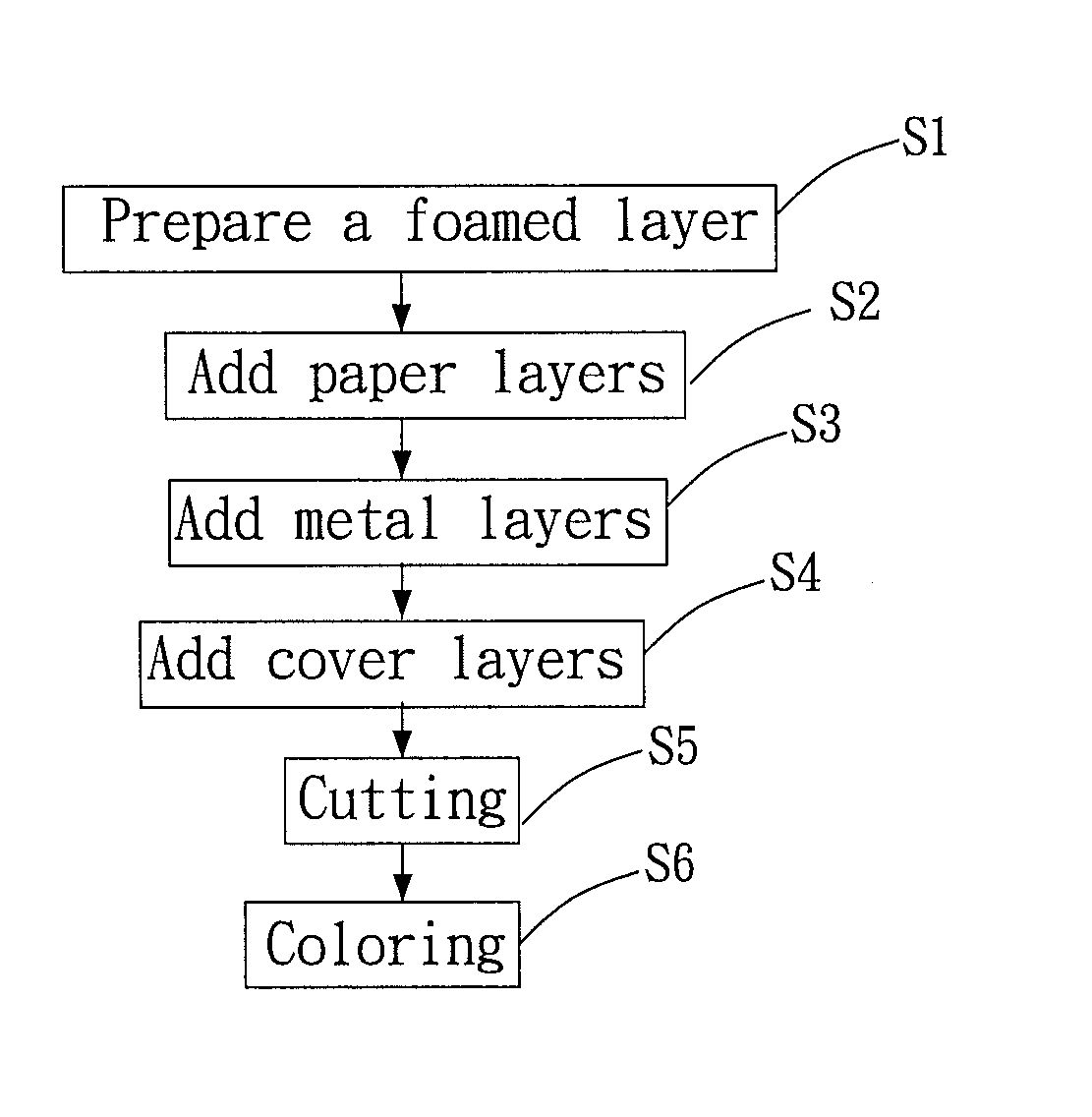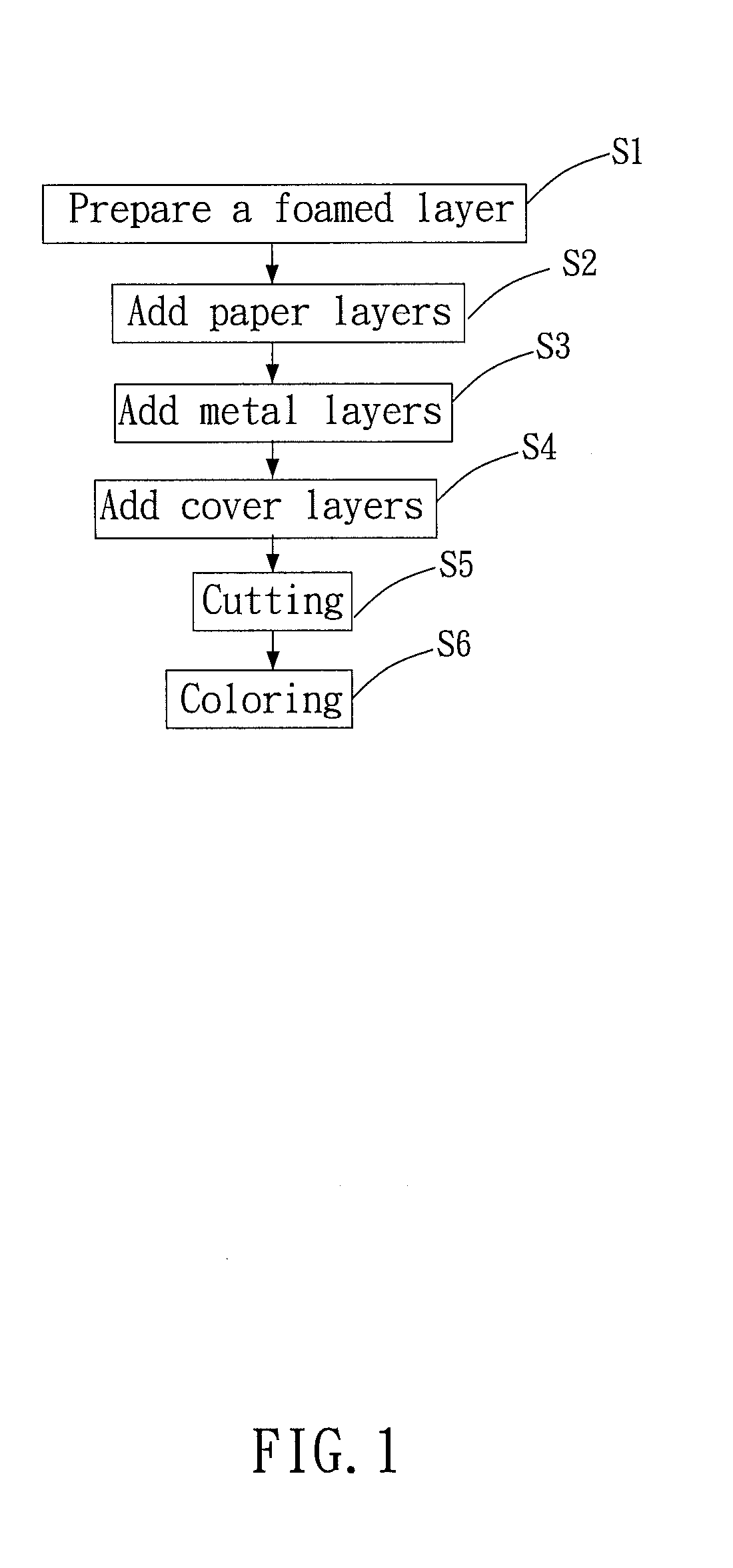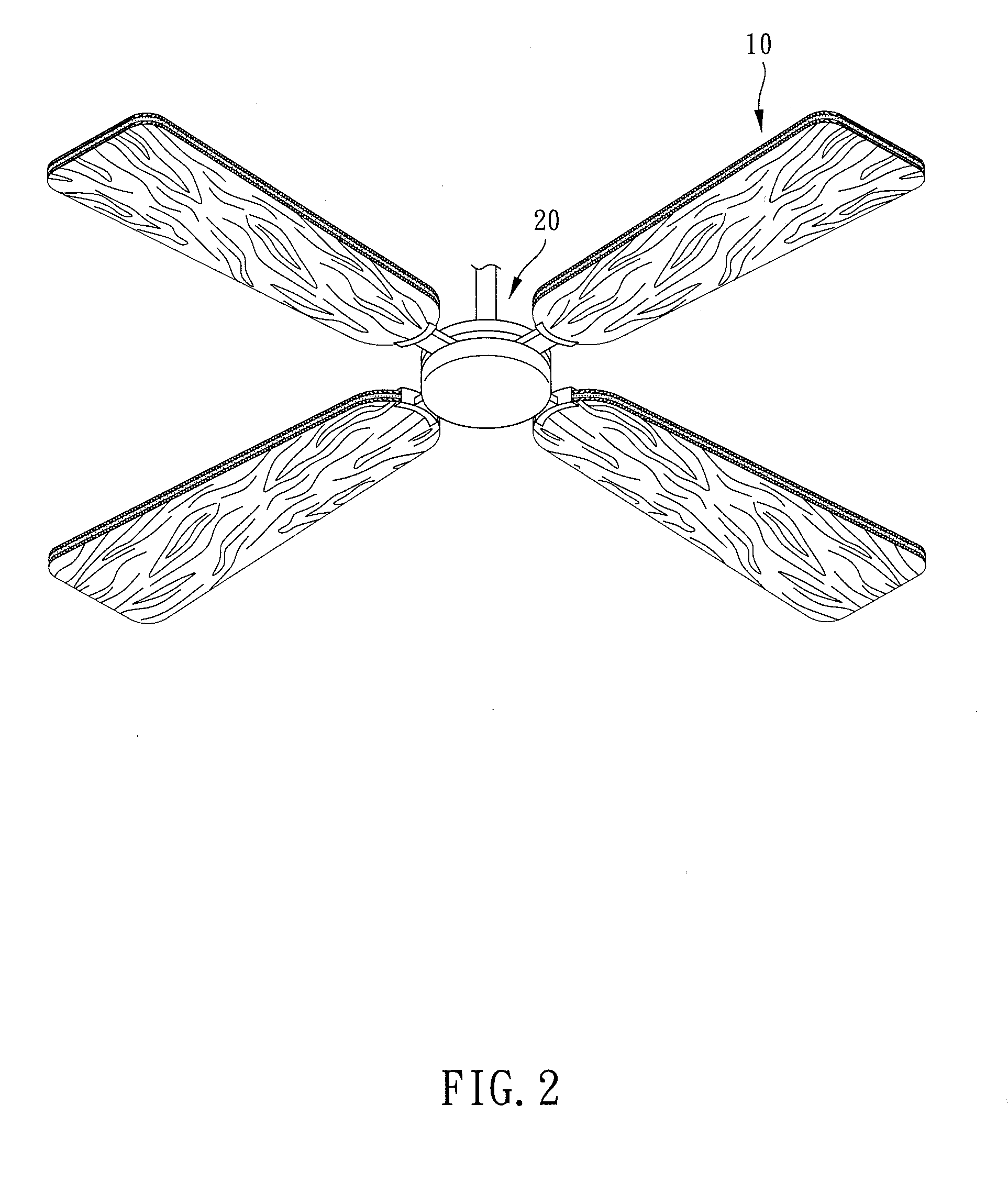Method for manufacturing ceiling fan blade
a ceiling fan and manufacturing method technology, applied in the direction of machines/engines, mechanical equipment, liquid fuel engines, etc., can solve the problems of heavy wooden fan blades falling to hurt people, difficult installation of conventional ceiling fans, and high loading of motors to rotate ceiling fans, etc., to achieve easy manufacturing and light weight
- Summary
- Abstract
- Description
- Claims
- Application Information
AI Technical Summary
Benefits of technology
Problems solved by technology
Method used
Image
Examples
Embodiment Construction
[0020]Please refer to FIG. 1 to FIG. 5 and FIG. 3A, the method for manufacturing ceiling fan blade is provided in the present embodiment. The ceiling fan blade 10, 10′ is adapted for being disposed on a ceiling fan base 20. The method for manufacturing the ceiling fan blade 10, 10′ includes the following steps.
[0021](a) Prepare a foamed layer S1: prepare a polystyrene material and foam the polystyrene material to form a foamed layer 11 which has a predetermined thickness. The foaming magnification of the foamed layer is not larger than 20 to maintain sufficient structure strength.
[0022](b) Add paper layers S2: Position a corrugated paper sheet on each of two opposite faces of the foamed layer 11 to form a paper layer 12 wherein the corrugated paper sheet forms a plurality of passages parallel arranged. More specifically, two paper sheets are adhered onto two opposite faces of the foamed layer 11 from two ends of the thickness direction of the foamed layer by glue or adhesive. The pa...
PUM
| Property | Measurement | Unit |
|---|---|---|
| weight | aaaaa | aaaaa |
| gravity | aaaaa | aaaaa |
| thickness | aaaaa | aaaaa |
Abstract
Description
Claims
Application Information
 Login to View More
Login to View More - R&D
- Intellectual Property
- Life Sciences
- Materials
- Tech Scout
- Unparalleled Data Quality
- Higher Quality Content
- 60% Fewer Hallucinations
Browse by: Latest US Patents, China's latest patents, Technical Efficacy Thesaurus, Application Domain, Technology Topic, Popular Technical Reports.
© 2025 PatSnap. All rights reserved.Legal|Privacy policy|Modern Slavery Act Transparency Statement|Sitemap|About US| Contact US: help@patsnap.com



